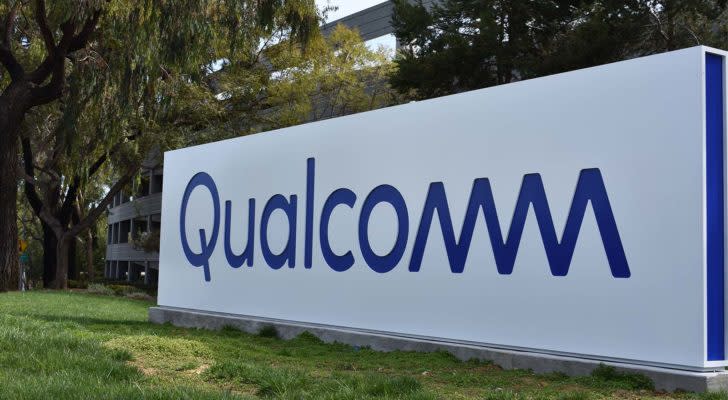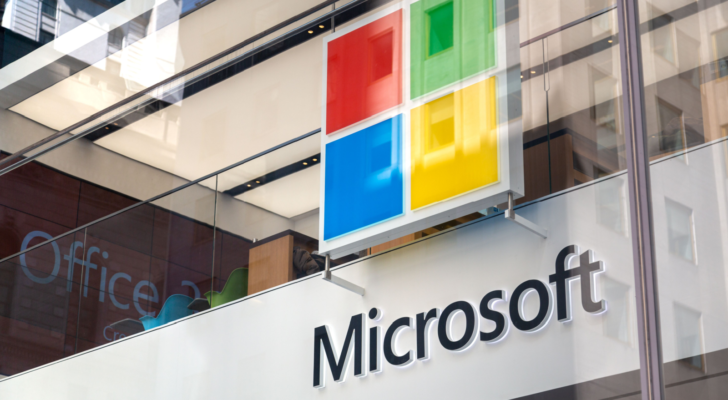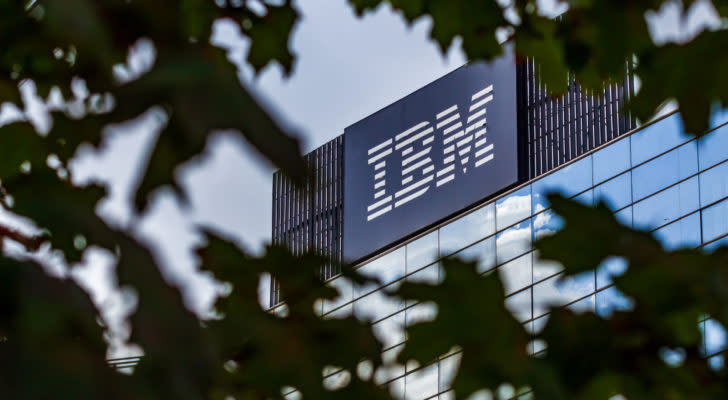Boost Your Passive Income with 7 Reliable Dividend Stocks
Dividend investing is a lot easier than real estate. It takes less work to set up and manage a portfolio of reliable dividend stocks. You will also get payouts every month or quarter just by holding onto your shares.
These are the main attractions that make people consider this investing strategy. However, some dividend-paying companies end up cutting or suspending their dividends. AT&T (NYSE:T) is a recent example of this trend. Many dividend investors flocked to this stock for its high yield only to get disappointed with a dividend cut and dismal returns.
While picking bad dividend stocks can have negative consequences for your portfolio, investors can choose from many promising dividend stocks. These corporations consistently distribute and hike their dividend payouts. If you’re looking to diversify your portfolio, start with these reliable dividend stocks.
InvestorPlace - Stock Market News, Stock Advice & Trading Tips
Exxon Mobil (XOM)

Source: Jonathan Weiss / Shutterstock.com
One of the top most reliable dividend stocks is Exxon Mobil (NYSE:XOM). The corporation has raised its dividends for 40 consecutive years and allocated up to $50 billion in share repurchases from 2022 to 2024.
The stock’s dividend yield is roughly 3.7%. You will earn a higher dividend payout for holding onto this company and can end up with decent returns. Although the stock is down by 3% year-to-date, shares are up by 33% over the past five years.
Exxon Mobil is also a profitable business that regularly posts profit margins in the 10% to 15% range. The oil giant makes the most sense for investors who want to minimize risk, get high payouts right away, and potentially realize some upside in the stock price.
Qualcomm (QCOM)

Source: Akshdeep Kaur Raked / Shutterstock.com
Another one of the top most reliable dividend stocks is Qualcomm (NASDAQ:QCOM), a semiconductor company that produces chips for smartphones and other devices. While many semiconductor stocks took off during May’s artificial intelligence boom, QCOM stock largely missed out on the rally.
Qualcomm reported a few consecutive quarters of declining revenue and earnings, so it’s easy to see why many investors stayed on the sidelines. However, the stock almost fell below $100/share which was excessive.
Investors noticed the opportunity and accumulated shares near the end of October. The stock now trades at roughly $130/share with a 20 price-to-earnings (P/E) ratio and a 2.5% dividend yield. The company raises its dividend each year and recently hiked its quarterly dividend per share from $0.75 to $0.80, marking a 6.7% year-over-year increase.
Smartphone demand is picking up and helped the company exceed the midpoint of its fourth-quarter guidance. Qualcomm still reported year-over-year revenue and earnings declines, but those trends will likely flip next year because of heightened demand and soft comps.
Main Street Capital (MAIN)

Source: wutzkohphoto / Shutterstock
Main Street Capital (NYSE:MAIN) pays out a monthly dividend and has a 6.8% dividend yield. The company pays non-qualified dividends, which means they will be taxed at your income tax rate. It’s good to keep that in mind before investing in any business development company like MAIN or real estate investment trust.
Main Street Capital lends money to lower and middle-market companies. The firm profits when borrowers pay back their loans with interest. Main Street Capital targets companies with healthy financials which increases the chances of receiving on-time payments each month. The criteria are companies with $10 million to $150 million in revenue and EBITDA between $3 million and $20 million.
The corporation has never decreased its monthly dividend rate and occasionally surprises investors with higher dividends. For instance, the company paid supplemental dividends of $0.95 per share in the four quarters ended Dec. 31, 2023.
Other than the high yield, Main Street Capital doesn’t generate much returns. Shares are up by 13% year-to-date but have only gained 11% over the past five years. The company’s high dividend yield makes long-term gains look more impressive, especially for people who reinvested the dividend.
Microsoft (MSFT)

Source: The Art of Pics / Shutterstock.com
Microsoft (NASDAQ:MSFT) is at the forefront of cloud computing and artificial intelligence. The company has a $13 billion investment in OpenAI and is pushing out its own AI initiatives.
The tech titan recently launched Copilot which is an AI assistant for Microsoft 365 products. This AI bot allows users to create PowerPoint presentations, press releases, and other vital documents in a few seconds instead of a few hours. While these aren’t final documents a business should use, they can speed up your path to a first draft.
Microsoft currently pays out an unimpressive 0.80% dividend yield, but everything else about the company makes it a compelling pick. It’s a staple in many index funds and mutual funds. Shares have gained 56% year-to-date and are up by 257% over the past five years.
Microsoft is charging toward a $3 trillion market cap and can realistically reach that milestone within a few weeks. An end-of-the-year rally can potentially give the stock the extra push it needs to claim an astonishing valuation.
American Express (AXP)

Source: First Class Photography / Shutterstock.com
American Express (NYSE:AXP) has a lower P/E ratio than other large credit card companies. It also has a higher dividend yield which currently stands at 1.40%. The stock is up by 18% year-to-date driven by a rally that started at the end of October. Shares are up by 63% over the past five years.
The financial services company reported 34% year-over-year earnings per share growth in the third quarter. EPS reached a record $3.30 in the successful quarter. Revenue grew by 11% year-over-year.
American Express also reported that total card member spending increased by 7% year-over-year. The firm reported that restaurant spending was one of the fastest-growing categories.
American Express and the other credit card companies offer a glimpse into how consumers are feeling about their economy and where their dollars go. The company is gaining traction among Millennial and Gen Z consumers which can lead to more gains in the future.
IBM (IBM)

Source: shutterstock.com/LCV
IBM (NYSE:IBM) is coming back to life after experiencing two lost decades depending on when you bought shares. Some investors who bought shares in the summer of 1999 still had a net loss on the stock price as recently as the first quarter of 2023.
Stocks with that type of history normally don’t experience much growth moving forward. However, IBM has been reinventing itself as a cloud and cybersecurity company. The Red Hat acquisition accelerated this trend and has produced respectable results.
Shares have gained 13% year-to-date and are up by 41% over the past five years. IBM has an enticing 4.15% dividend yield and a 21 P/E ratio. That valuation is lower than many tech stocks in the same industry.
Even with the shift, investors shouldn’t expect IBM to report ground-breaking revenue and earnings growth. Revenue growth usually hovers in the low single digits while net income has grown at a faster pace.
Extra Space Storage (EXR)

Source: Ken Wolter / Shutterstock.com
Extra Space Storage (NYSE:EXR) has a vast real estate portfolio of over 2,000 self-storage properties. These properties encompass roughly 1.5 million units and 164 million square feet of rentable storage space.
Self-storage doesn’t require as much upkeep as rental properties. That’s why Extra Storage Space normally reports profit margins near 40%. Although margins are normally impressive, they were a bit lower in the most recent quarter.
Shares have had a rough go at it year-to-date and are down by 7% during that time. The 5-year gains paint a better picture. The stock is up by 36% during that amount of time. The recent slowdown in appreciation has left the stock with a 25 P/E ratio and a 4.8% dividend yield.
Extra Space Storage recently increased its market share by merging with Life Storage. The conglomerate can capitalize on its vast presence and generate higher returns for shareholders. It’s hard to get into self-storage because of the high price points for facilities. Luckily, EXR makes it easy to get exposure to this industry.
On this date of publication, Marc Guberti held long positions in QCOM, MSFT, and EXR. The opinions expressed in this article are those of the writer, subject to the InvestorPlace.com Publishing Guidelines.
Marc Guberti is a finance freelance writer at InvestorPlace.com who hosts the Breakthrough Success Podcast. He has contributed to several publications, including the U.S. News & World Report, Benzinga, and Joy Wallet.
More From InvestorPlace
ChatGPT IPO Could Shock the World, Make This Move Before the Announcement
Musk’s “Project Omega” May Be Set to Mint New Millionaires. Here’s How to Get In.
The Rich Use This Income Secret (NOT Dividends) Far More Than Regular Investors
The post Boost Your Passive Income with 7 Reliable Dividend Stocks appeared first on InvestorPlace.
